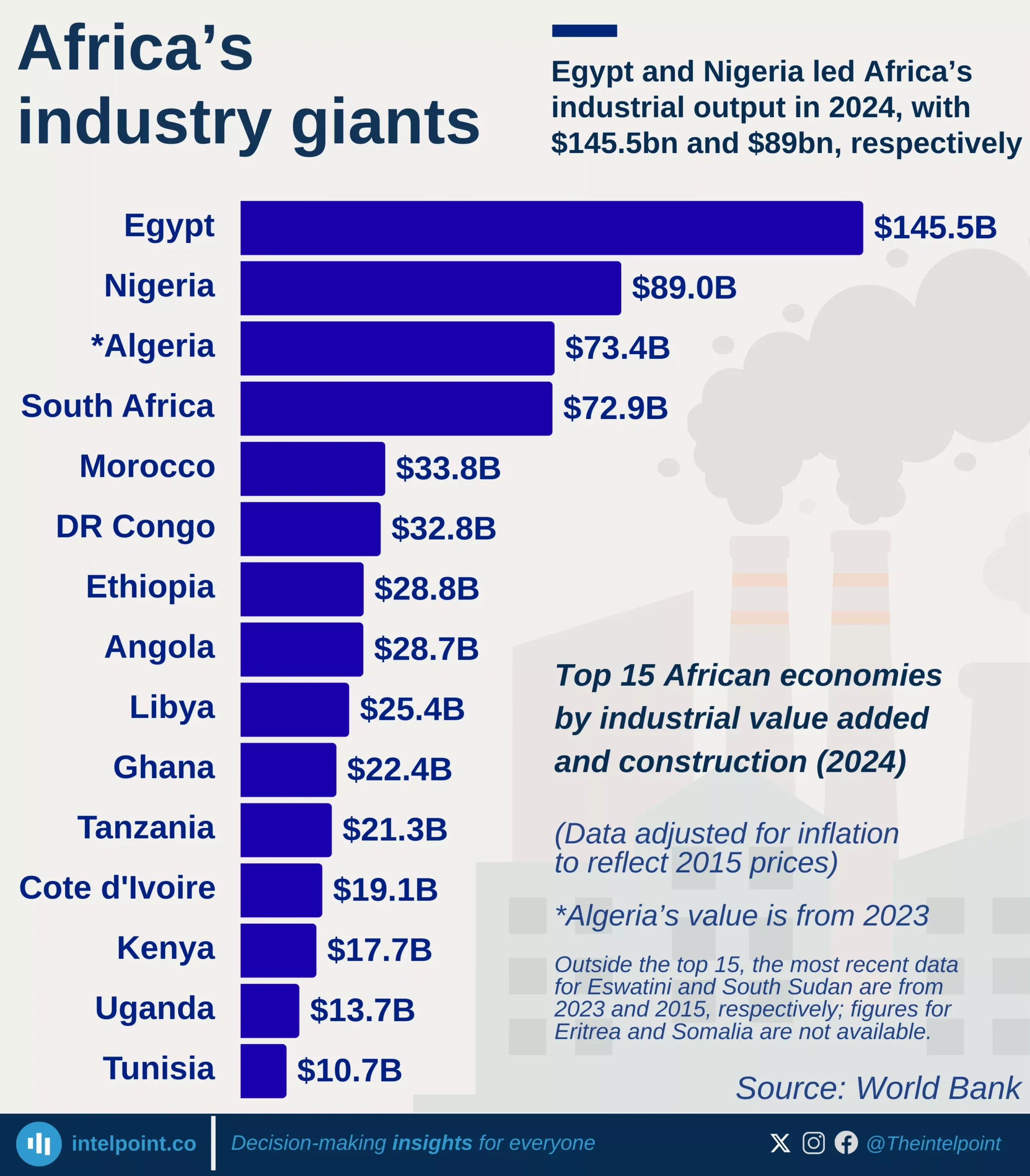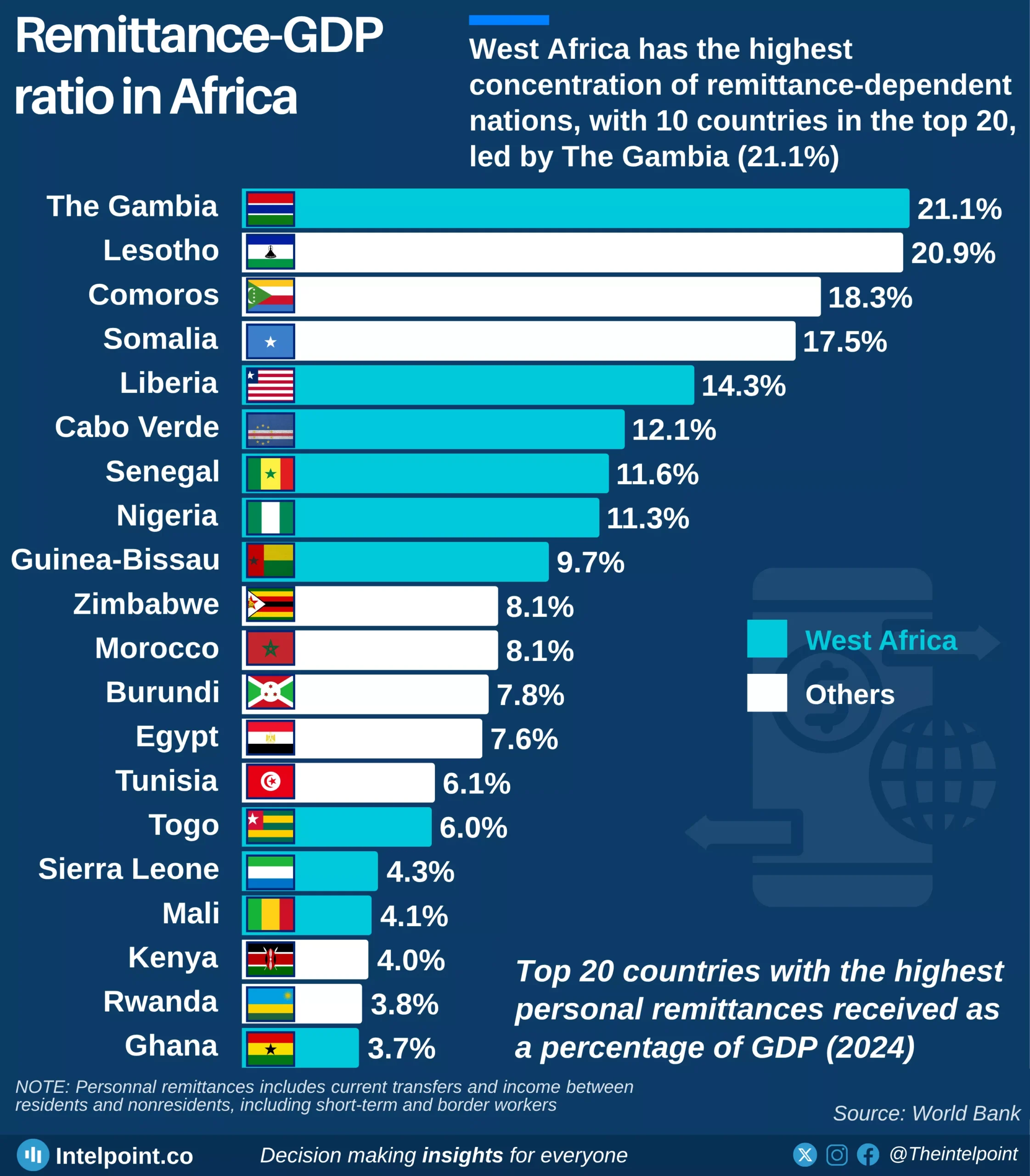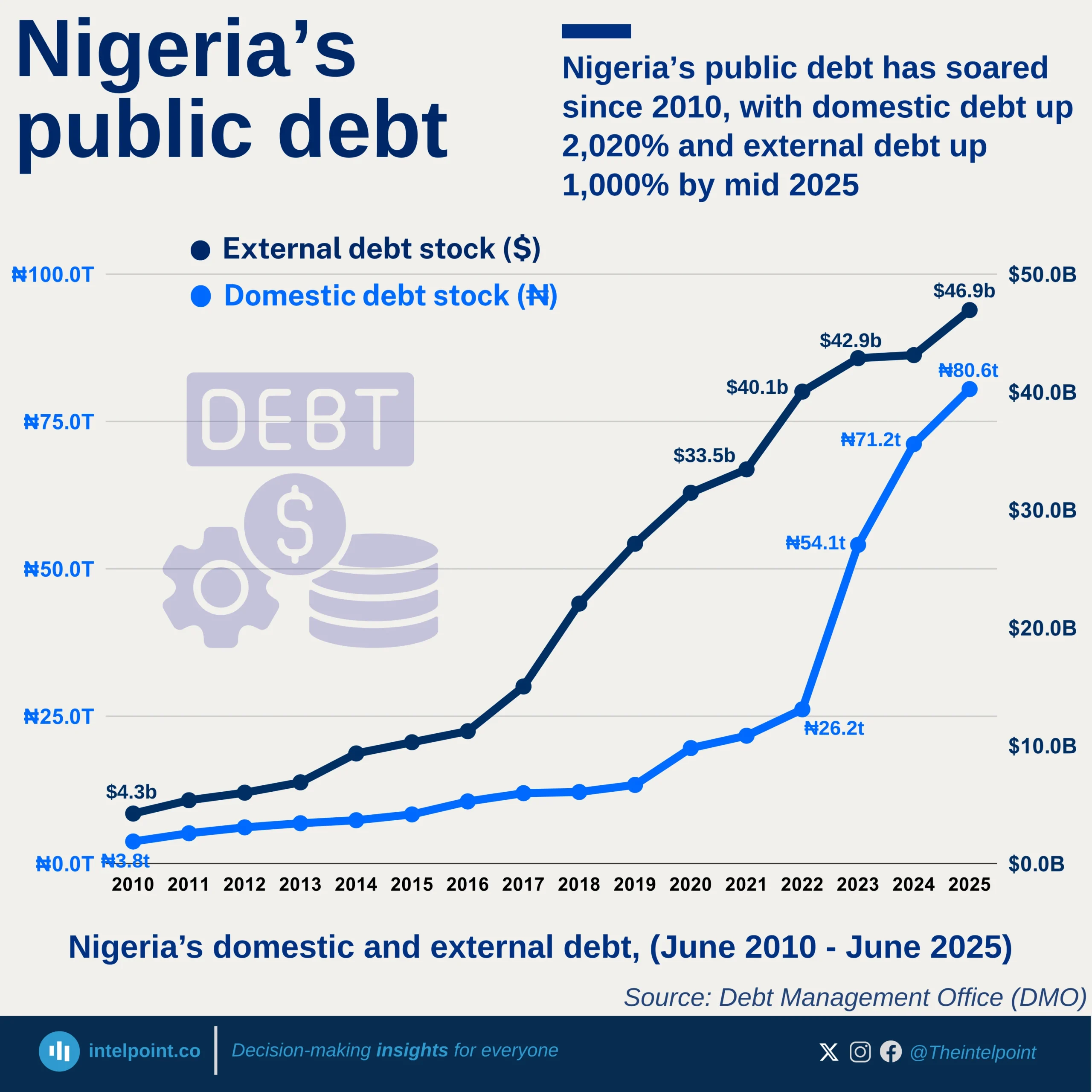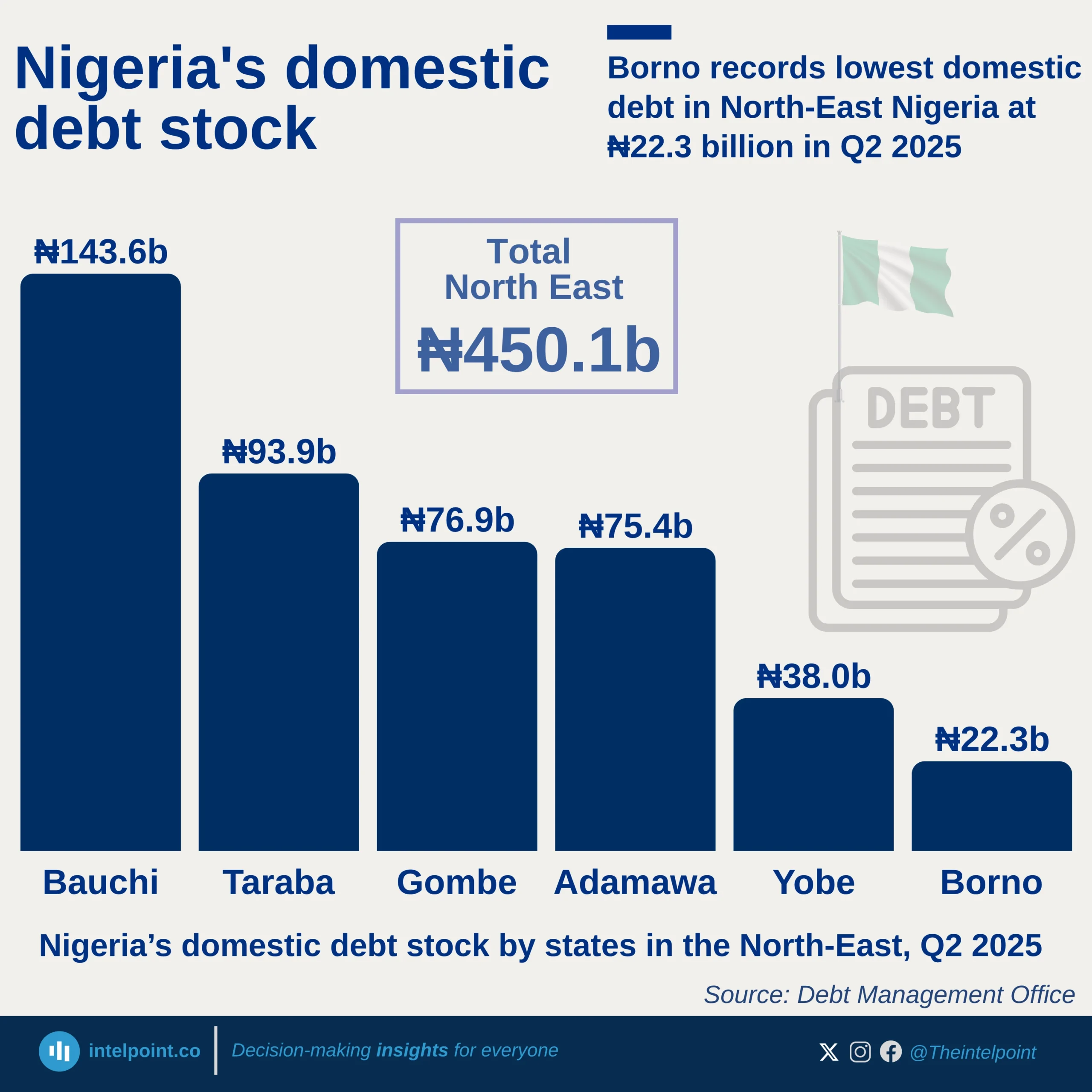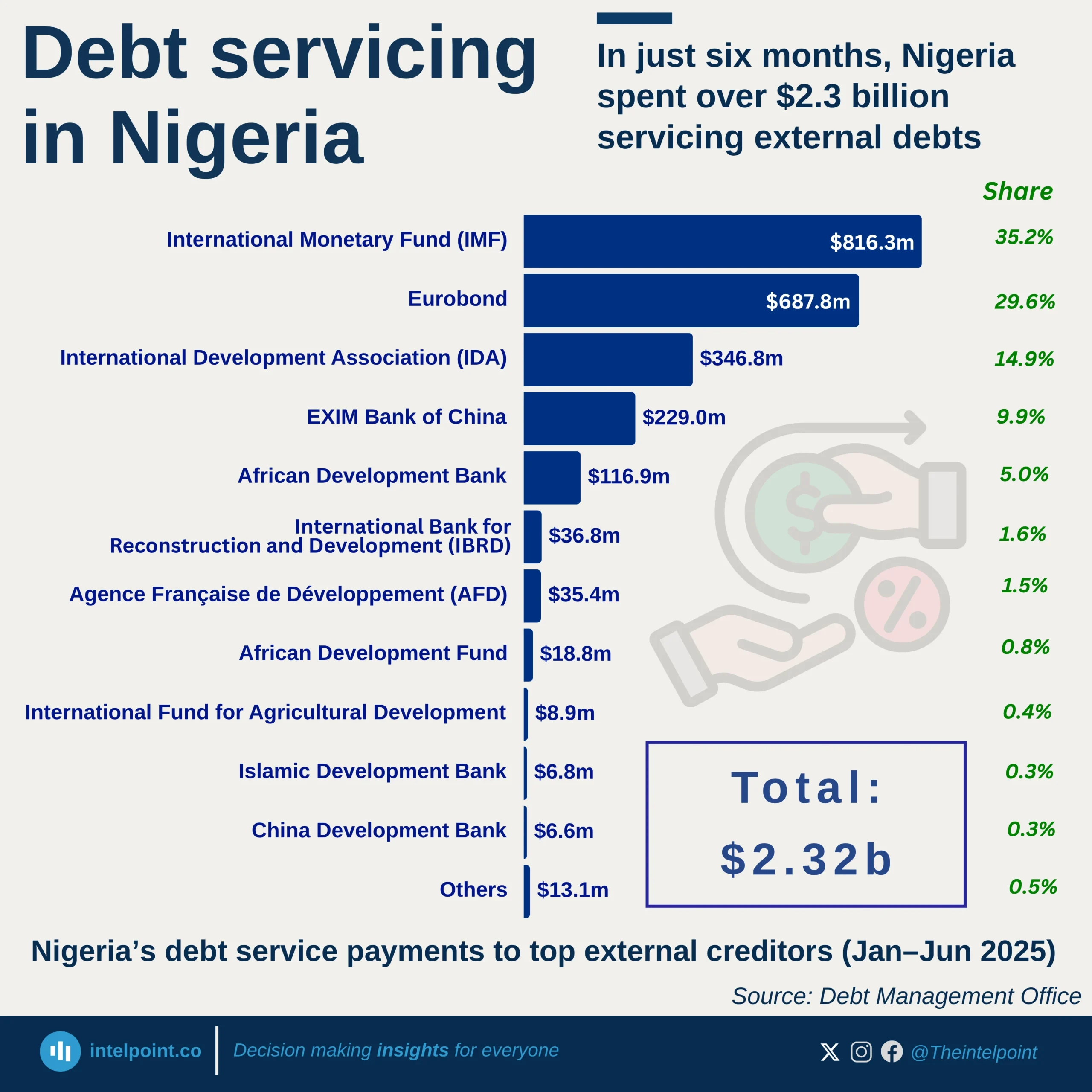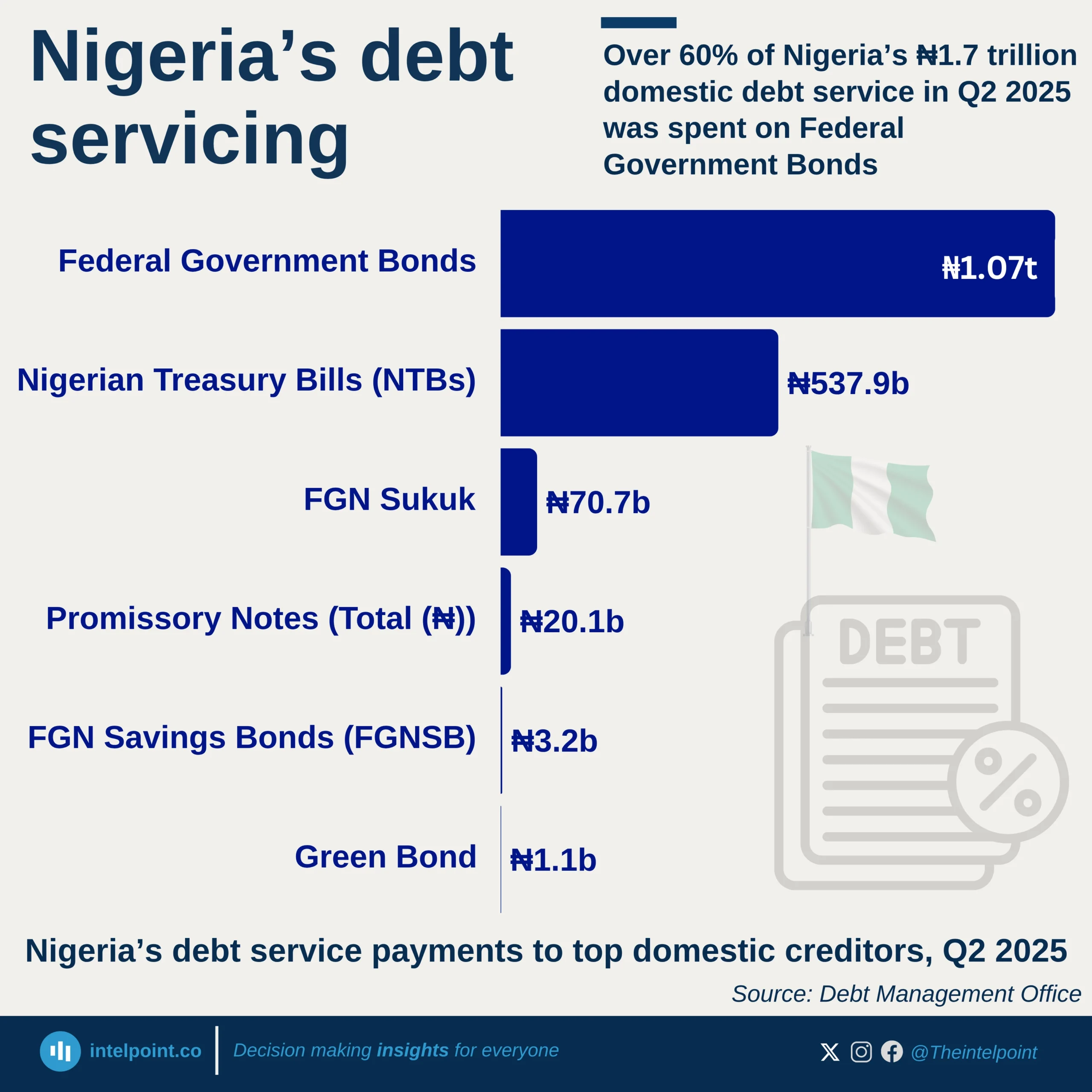Africa’s external debt service burden peaked at an estimated $102.6 billion in 2024, but the outlook suggests a sharp decline over the next five years. Between 2024 and 2029, the total amount that African countries are expected to spend annually servicing their external debts will fall by more than $39 billion (according to projections of the International Debt Statistics), signalling a shift in the continent’s debt dynamics. After more than a decade of steady growth in debt servicing costs, this marks a potential turning point.
One of the most dramatic changes in the chart is the YoY change in 2025, which shows a steep -13.5% drop, the sharpest single-year decrease over 20 years. While the figures from 2025 to 2029 are forecasts, they reflect changing debt maturity schedules, slowing new borrowing, or possibly even early repayments. For countries that have faced pressure on public finances, a reduced debt service burden could provide much-needed fiscal space for investment in social infrastructure and economic recovery efforts.
The trend also reflects how external debt obligations evolved. From $18.5 billion in 2009, payments steadily climbed to nearly $69 billion by 2021, and remained high through 2022. The spike to $102.6 billion in 2024 represents an extraordinary jump, driven by past borrowing and rising repayment schedules.
